We’ve looked at a few of Nepal’s surprisingly diverse and delicious culinary traditions. Today, we’ll take a gander at some of their equally unexpected Breads, Sweets, Snacks and Beverages. Again, the cultures of China, Tibet and India make their mark, and Nepal leaves its own stamp…
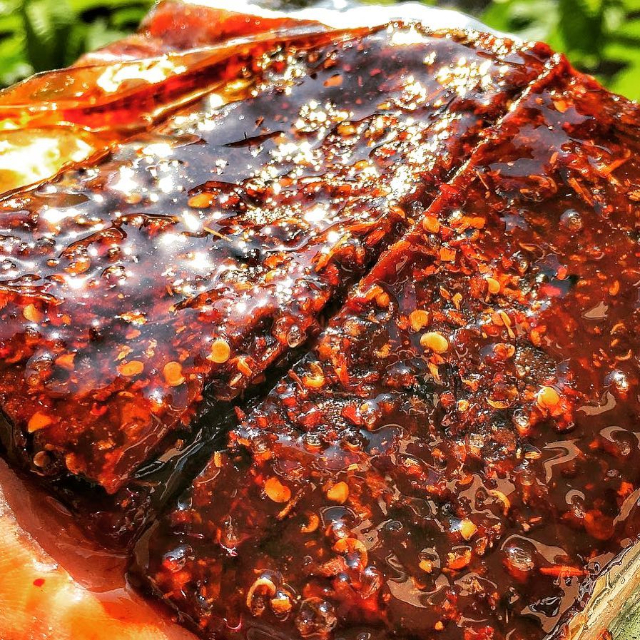
Tiataura: A Nepalese candy made from indigenous fruit.
You’ll notice similarities between some Nepalese Breads, Sweets and Beverages and those we’ve discovered on our culinary tours of other countries. But Nepal’s versions are distinctly their own. And we’ll find some that are found nowhere else..
On our menu today
As remote and extreme as Nepal may be from what we in the west may consider ‘the civilized world’, the capital, Kathmandu, is quite cosmopolitan, and offers many first class restaurants. Fortunately, most of these classy eateries feature the foods of their homeland, and their world-class chefs have added their own touches to a number of western dishes. But the traditional Nepalese foods always shine through…
Breads
While they don’t have anything we in the west would call ‘Bread’, the Nepalese have developed a core of baked goods that play the same role in their diet. They do incorporate Indian breads in their menu, including Paratha, Naan and Chapatis. But they have some that are all their own…
Puri: This is the daily bread of Nepal, eaten at all times of day in all corners of the country. Made from only white wheat flour, salt, Ghee and water, it is shallow-fried in vegetable oil. Puri always comes in palm-sized flattish ‘rolls’ commnly served with stews or soups. An adult can be expected top consume as many as 4 or 5 per meal.
Gurung: A deep-fried flatbread made from white flour, sugar, salt and baking powder, and deep fried for a few seconds. If it’s thin, it gets crispy through and through. If its thicker, it puffs up.
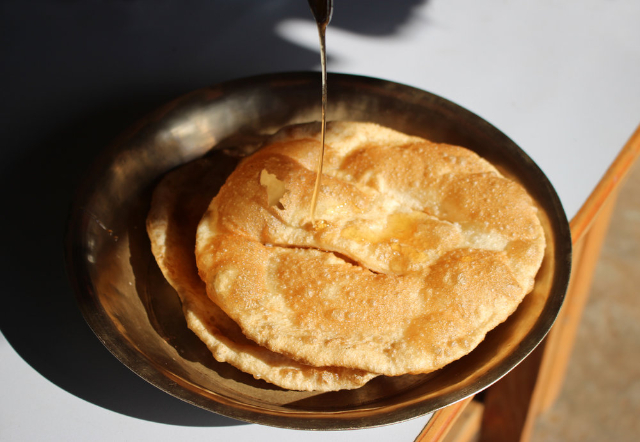
Gurung is usually eaten with honey or boiled eggs, accompanied by a cup of tea
Wo/Bara: A ubiquitous pancake of the Kathmandu Valley region, this all-purpose flatbread is made from Dal (lentils) – usually yellow, but also black and green during the Newari festival of ‘Sithi Nakha’. They’re a street food – perfect for snacks – and vegan. If you eat meat, you can also get them with minced chicken or eggs blended in.
Sel Roti: Described by one authority as a fusion of doughnut and bagel, this snack food is especially popular at Nepalese festivals. Made of Rice Flour, it’s crispy on the outside, and chewy and sweet on the inside. That makes it great on its own, but it’s also enjoyed with Juju Dhau (yogurt) as a dip.
Desserts and Sweets
Again, Nepal has imported many Indian sweets and desserts, but the national cookbook boasts many treats that are distinctly Nepalese…
Khuwa: This intriguing milk dish is made either with fresh whole milk or powdered milk, stirred over low heat until it thickens to a ‘greek yogurt’ consistency. It’s often served in a cup to be eaten with a spoon as a dessert or treat.
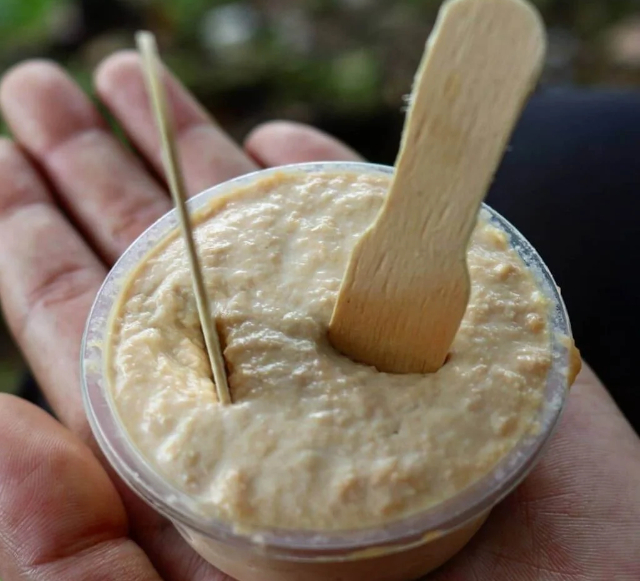
If you evaporate almost all the water from the milk, you’ll get a cakey mass of milk solids which is served by itself in cubes or as an ingredient in other Nepalese dishes.
Burfi: Diamond-shaped Milk Cakes. Just like Khuwa, above, this dish is flavoured with cardamon and sugar. Pour the hot Khuwa onto a plate or flat pan, let cool, and cut the resulting firm substance into diamond-shaped bars.
Peda: Milk Bazlls. This is one of the most common desserts and voti9ve offerings in Nepal. It’s made by heating milk gently with a pinch of cardamon, then adding a few drops of lemon juice of white vinegar to separate the curds from the whey.
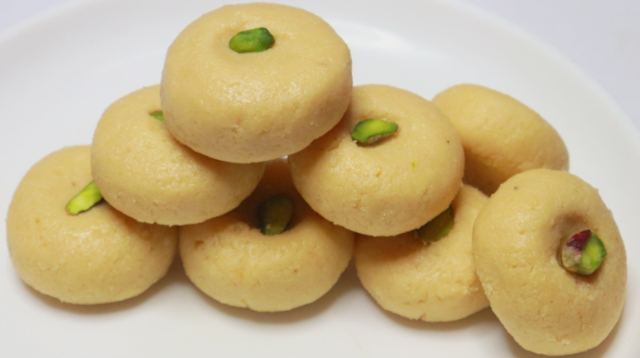
Discard the whey. Then let the curds cool before shaping them into small slightly flattened balls. Press a Pistachio nut into each ball to complete the prep.
Kheer: Rice Pudding. The recipe calls for only rice, sugar, milk cardamon and unsalted cashew nuts. Just cook the rice in the milk until the grains are soft and the mixture is thick. Add the sugar, cardamon and nuts, and cook for a few more minutes until the sugar and spice are fully incorporated.
Yomari: Dessert ‘Ravioli’. Small pockets of rice flour pastry stuffed with a paste composed of molasses, sesame seeds and coconut. It’s a very special treat, served only during the winter festival of Yomari Punhi, a thanksgiving celebration to the gods for a good harvest.
Gud Pak: A special creamy dessert/specialty traditionally served to new mothers, and gifted to family and friends for good luck.
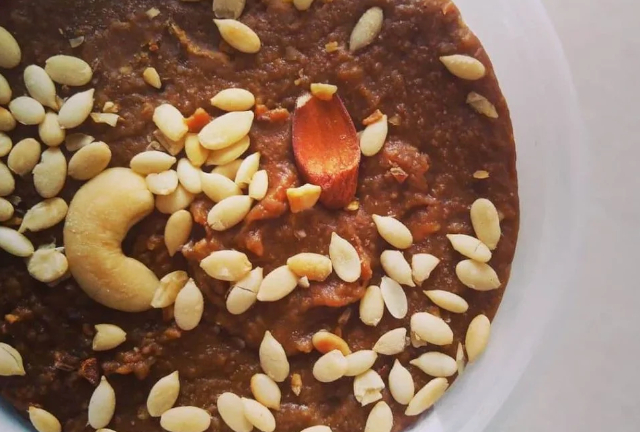
The main ingredients are milk, coconut, Gundh (an edible gum), cardamon, nutmeg, brown sugar and nuts.
Pau/Titaura: According to nepaliaustralian.com, “Tiatura is sweet, sour, salty or hot or mixture of all those, made from fruits like lapsi (pronounced “Lopsy”) which is also known as Nepali Hog Plum or scientific name Choerospondias axillaries.” It can come clear and stiff like Peanut Brittle, or softer in squares like nougat. In some urban spaces, the streets are lined with Titaura stands.
Beverages
Chai/Chiah: Nepalese Tea is a special beverage, starting with Black Tea steeped in boiling water, then simmered for about 10 minutes with milk, sugar, whole cloves, cardamon pods and a cinnamon stick.
Butter Tea: Popular across the Himalayas, this beverage is made from tea leaves, yak or cow butter, water, and salt. According to Wikipedia, “The highest quality of butter tea is made by boiling pu-erh tea leaves in water for half a day, achieving a dark brown color.
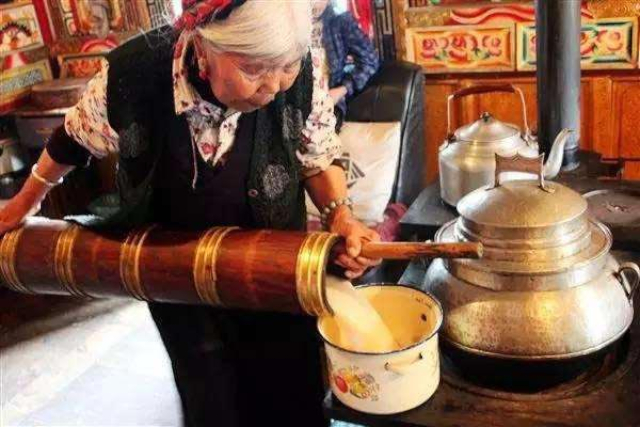
“It is then skimmed, and poured into a cylinder with fresh yak butter and salt which is then shaken. The result is a liquid that is about the thickness of a stew or thick oil. It is then poured into teapots or jars.” Still interested?
Chyang: This rice beer is slightly cloudy with a flavour like a mild cider. Lots of families make it at home, as do vendors, keeping the price low and the availability high. Honeyguideapps.com states, it’s probably the single most-consumed drink in Nepal.
Kodo Ko Raksi: Though made commercially, this millet-based distilled tipple most often shows up as moonshine (neighbourhood Raksi stills; see photo directly below). It’s typically 20 – 30 percent alcohol by volume. And the Nepalese insist that like the best Vodka, the purest raksi is as tasteless and smooth as rainwater.
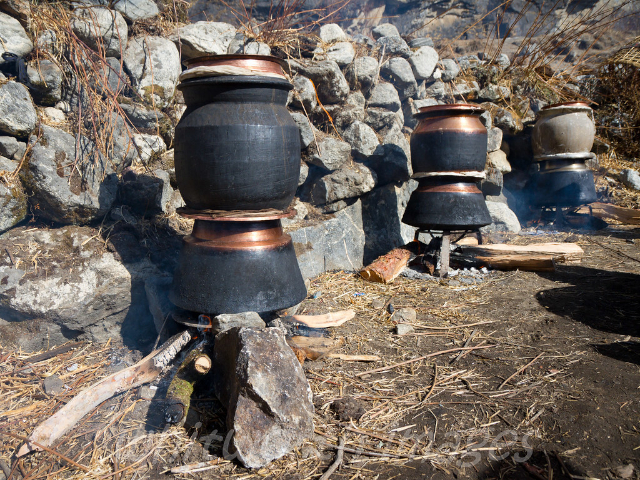
Warning: Aficionados say this stuff can easily be over-consumed, and will rear up and smack you after a few hasty shots. It’s a distant cousin to Turkish Raki and Middleastern Arak.
Tongba: This is generically referred to as ‘Hot Beer’. Millet is boiled into must, or mash, and left to ferment is that almost-waterless state.
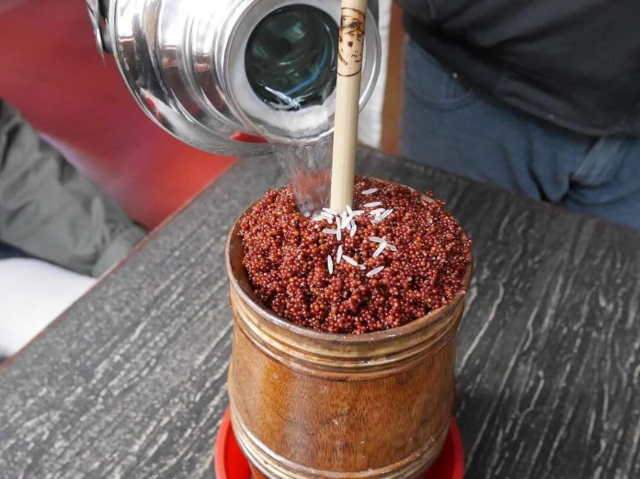
After fermenting for a week or two, a generous amount is doled out into cask-like mugs and hot water is added to draw out the alcohol. Traditionally, it’s consumed hot, through bamboo straws.
Ready for your soujourn to the top of the world?
You can do it from your armchair (or whatever seating device you prefer) via the internet. Just google any of the dishes we’ve presented over the last two days for recipes and more cultural background. You’ll want to do some research on a few of the more obscure ingredients, too, if the more obscure recipes strike your fancy! I urge you to try the cuisine of Nepal. Especially the dishes you won’t find anywhere else!
~ Maggie J.

